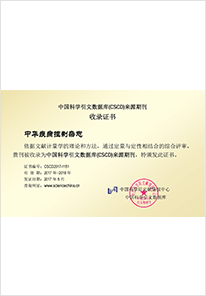2022 Vol. 26, No. 7
Display Method:
2022, 26(7): 745-749.
doi: 10.16462/j.cnki.zhjbkz.2022.07.001
Abstract:
2022, 26(7): 756-765.
doi: 10.16462/j.cnki.zhjbkz.2022.07.003
Abstract:
2022, 26(7): 766-770.
doi: 10.16462/j.cnki.zhjbkz.2022.07.004
Abstract:
2022, 26(7): 777-783.
doi: 10.16462/j.cnki.zhjbkz.2022.07.006
Abstract:
2022, 26(7): 784-789.
doi: 10.16462/j.cnki.zhjbkz.2022.07.007
Abstract:
2022, 26(7): 790-797.
doi: 10.16462/j.cnki.zhjbkz.2022.07.008
Abstract:
2022, 26(7): 798-802.
doi: 10.16462/j.cnki.zhjbkz.2022.07.009
Abstract:
2022, 26(7): 815-819.
doi: 10.16462/j.cnki.zhjbkz.2022.07.012
Abstract:
2022, 26(7): 820-826.
doi: 10.16462/j.cnki.zhjbkz.2022.07.013
Abstract:
2022, 26(7): 827-833.
doi: 10.16462/j.cnki.zhjbkz.2022.07.014
Abstract:
2022, 26(7): 839-844.
doi: 10.16462/j.cnki.zhjbkz.2022.07.016
Abstract:
2022, 26(7): 845-850.
doi: 10.16462/j.cnki.zhjbkz.2022.07.017
Abstract:
2022, 26(7): 851-856.
doi: 10.16462/j.cnki.zhjbkz.2022.07.018
Abstract:
2022, 26(7): 857-861.
doi: 10.16462/j.cnki.zhjbkz.2022.07.019
Abstract:


 Email alert
Email alert RSS
RSS Abstract
Abstract HTML
HTML PDF
PDF





